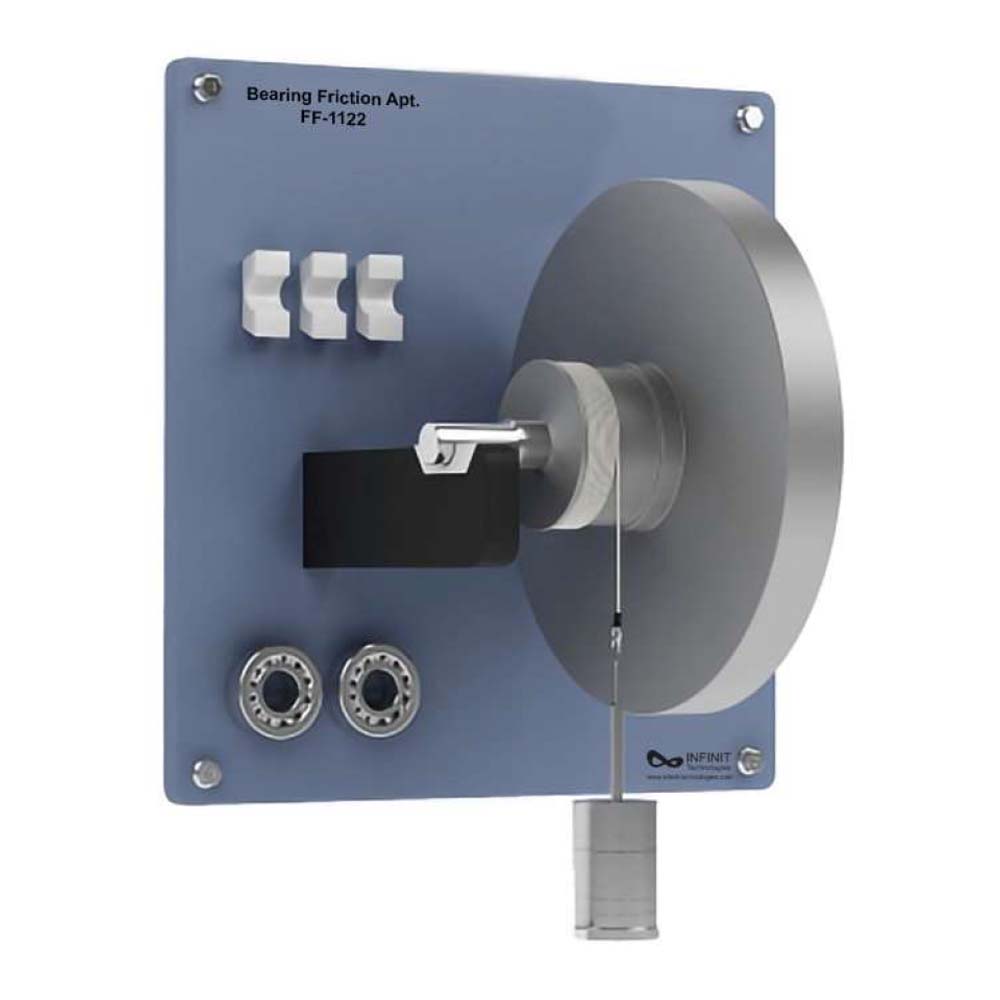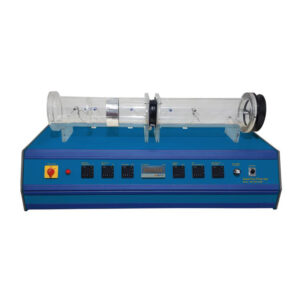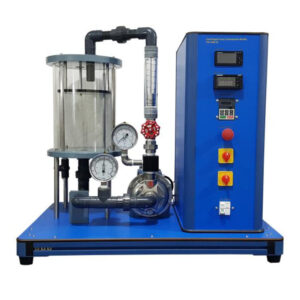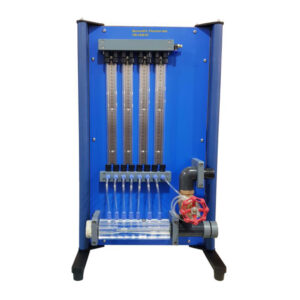This apparatus is used to differentiate to the students between sliding and rolling friction as well as explain the application of these two friction forces in industrial works. In this apparatus, different types of plain and rolling are used. These are made of different materials like iron, bronze etc. the apparatus also includes a flywheel that is mounted upon an axle. Axle is supported in a plain or ball bearing and bearing housing is attached with wall bracket. Torque is applied by putting dead weights on the flywheel using hanger which corresponds to the frictional torque when motion begins. This apparatus helps students by providing experiments relating to friction on sliding and rolling bearings. Bearing shells in various materials serve as sliding bearings. Bearing forces are generated by the dead-weight of a heavy flywheel. A torque is applied by means of weights which correspond to the frictional torque when the motion begins. When the rolling bearings are used the bearing friction is very low. In this case the flywheel can be used for fundamental experiments in rotational dynamics. The unit is intended for mounting on a laboratorywall.
Experiments
- Determination of friction torque on sliding bearings: various material pairings by means of interchangeable bearing shells.
- Determination of the friction torque on a rolling bearing.
- Comparison between sliding and rolling bearing.
- Fundamental experiments in rotational dynamics.
Specifications
- Experiment in sliding bearing friction with various material pairings and comparison with rolling bearings.
- 3 different bearing materials for sliding bearing shells.
- Stainless steel shaft.
- Flywheel of galvanised steel.
- Drive by cable drum and weight set.
- Base plate of anodised aluminium.
- Experiments in rotational dynamics possible.




